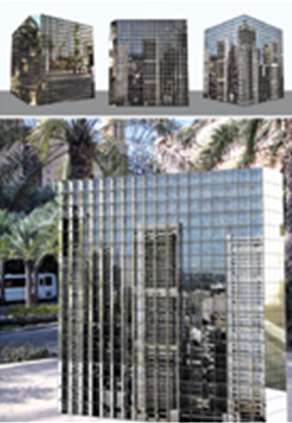Mansoor Rahi
This is a collection of articles archived for the excellence of their content. Readers will be able to edit existing articles and post new articles directly |
Mansoor Rahi
A new Rahi returns to Karachi
Mansoor Rahi has come back to Karachi. It’s after three years that we get to feast our eyes, exclusively on his works. The venue is Art Scene, the new kid on the art block. The three-level gallery on a lane off Khayaban-i-Mujahid, close to the old Gazebo, was inaugurated by Gulgee, a few days before he was murdered. His picture, very representative of him, is displayed prominently.
And as for the exhibition, most of Rahi’s 45 paintings and drawings were sold before the curtains were raised on the exhibition, the others will not last long it seems, but the city's art lovers have ten days to visit the gallery. The exhibition ends on the 27th.
Titled The Grey Genesis, the exhibition shows the emergence of grey in his colour paintings as also its various shades in black-and-white drawings and paintings. As a Rahi buff, who first saw his works in 1970 and has followed him with great interest I recall the time when he was inspired by Sadequain. The paintings were largely monochromatic and occasionally the figures were reminiscent of the senior artist's figures.
Came the mid-eighties and there was a burst of colours, which was also the time when he and his wife Hajra Mansoor, who is another accomplished artist, moved to Islamabad. When he came to what was then West Pakistan he fell in love with two things – Hajira, who I recall was the most good looking of all her siblings – and the hills of the Pothohar region, which is where Islamabad is nestled and where Rahi has what he calls his humble abode.
Back to his work: the appearance of grey is a recent phenomenon. His 2006 paintings are truly colourful (three of which are on display) but the ones that he did last year and early this year show the emergence of grey from out of a wide variety of colours.
His black-and-white sketches in graphite on paper are attractive – the texture of the paper lends an extra dimension to his work in this genre. But no less fascinating are his black-and-white drawings on canvas in oil. He calls them “open declaration of his calibre” and goes on to say, in an unguarded and for a change in an immodest moment, “these paintings show my command over drawing.” This he tells me when there is no one around, but he knows it will appear in print. But then there can be no two opinions about his highly developed drawing skills, which one doesn't fail to notice.
Michelangelo and Picasso are inspirations that have not forsaken him nor would he like to part with them. The strong contours of human body juxtaposed with semi-cubic figures continue to haunt him. But the distortions are his. Incidentally, he is less abstract now than he was in the past. He terms his new style as “neo-cubo precisionism”. A proof of his return to realism lies in the horse that makes occasional appearances in his paintings. Now you don’t have to make an effort to find out its outlines in his new works. All said, Rahi's new work needs to be seen to be fully appreciated.—Asif Noorani

